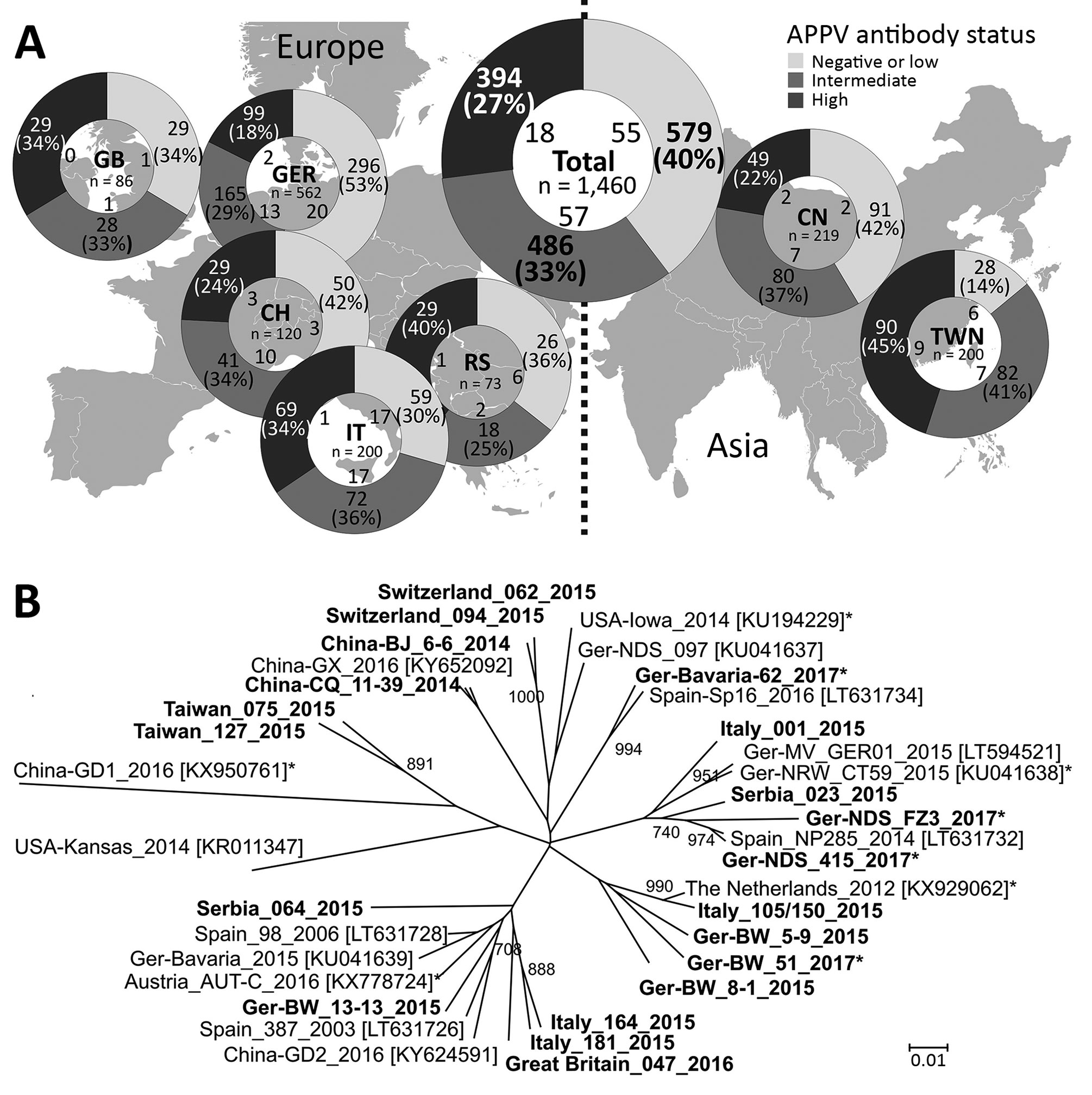Volume 23, Number 12—December 2017
Research Letter
High Abundance and Genetic Variability of Atypical Porcine Pestivirus in Pigs from Europe and Asia
Figure

Figure. Detection rates of APPV genome and antibodies and genetic variability in Europe and Asia. A) APPV antibody status in pigs from parts of Europe and Asia. The region of origin, the number of investigated samples, and the absolute numbers of APPV genome–positive samples in dependence on the serologic category (low, intermediate, or high APPV antibody status) are shown in the central circle. B) Phylogenetic tree based on a 400-nt fragment in the nonstructural protein 3 encoding region. We calculated genetic distances using the Kimura 2-parameter model. We performed phylogenetic analysis by the neighbor-joining method including 1,000 iterations for bootstrap analysis. Only bootstrap values ≥700 are indicated. Bold indicates sequences generated in this study; asterisks indicate sequences from piglets with congenital tremor. Accession numbers for reference sequences from GenBank are shown in brackets. APPV, atypical porcine pestivirus; CH, Switzerland; CN, China; GB, Great Britain; GER, Germany; IT, Italy; RS, Serbia; TWN, Taiwan. Scale bar indicate nucleotide substitutions per site.